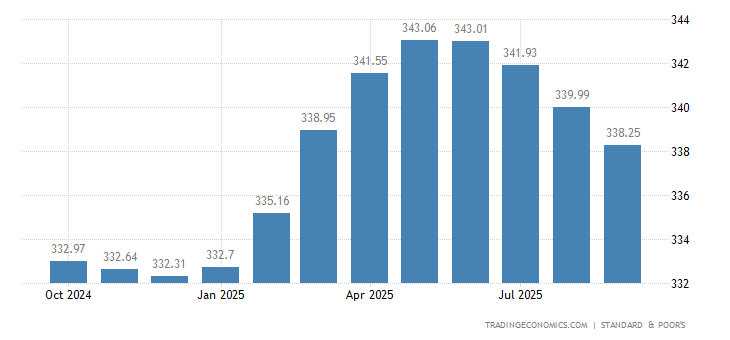To lure house hunters, sellers of high-end homes are slashing prices by as much as 30 percent. Many metro areas are succumbing to downward pressure from the U.S.-China trade war, uncertainty in Europe, rising interest rates, or a combination of all three. Of course, all real estate is local, so some discounts are better than others. Here’s where policymakers, central bankers, and developers are creating an environment for juicy deals today—or even better bargains tomorrow.

LONDON
By the numbers: Home values in the city’s prime neighborhoods are 19 percent below their 2014 peak, according to broker Savills Plc.
What happened? Few sellers anywhere have faced such a poisonous economic cocktail as those in the Chelsea, Kensington, and Westminster districts, where tax changes on luxury properties have hit hard. Add in Brexit and an anti-money-laundering crackdown on cash from countries such as Russia and China, and demand for high-end homes has dried up. The discounts were enough to lure hedge fund billionaire Ken Griffin to spend £95 million ($122 million) on a mansion near Buckingham Palace in January, a cut of almost 35 percent from the original price.
Act now! A five-bedroom home in the city’s most expensive apartment block, One Hyde Park, has been languishing on the market for two years. The asking price is £50 million, down from £55 million.

SYDNEY
By the numbers: Australian home prices have fallen more than 6 percent since their October 2017 peak. The decline in Sydney has been sharper—about 12 percent—making this the worst slump in four decades. Economists have predicted that Australia’s most populous city could see an additional 8 percent drop this year.
What happened? Easy credit caused prices to go crazy, then policymakers stepped in with a series of cooling measures including a restriction on banks from issuing interest-only loans popular with speculators. Regulations designed to deter foreign buyers, such as higher sales taxes, have only made it worse for investors, with many pulling out of the market. Because interest rates are at record lows and the country’s economy is growing modestly, it’s hard to see the window for bargain shopping closing anytime soon.
Act now! This four-bedroom home in Avalon Beach in Sydney’s Northern Beaches district comes with a private jetty, a boathouse, and a koi pond. Listed for A$6.9 million ($5.3 million) in December 2017, it’s now going for A$4.3 million, a 38 percent discount.

DUBAI
By the numbers: Dubai’s residential prices are down about 25 percent since their 2014 peak, according to broker Jones Lang LaSalle Inc.
What happened? If politicians and central bankers are to blame in most other places, overzealous developers in Dubai are responsible for the emirate’s slump. Dubai is planning to erect a record 31,500 homes this year, double the annual demand of the past five years, raising the risk that prices could fall further, according to JLL.
Act now! A typical six-bedroom, 7,000-square-foot Signature Villas home on the artificial archipelago of Palm Jumeriah, among the desert city’s most expensive neighborhoods, costs 20.5 million U.A.E. dirham ($5.6 million), according to Savills. That’s down from 22.75 million dirham in 2014, the broker says, an almost 10 percent discount.

HONG KONG
By the numbers: Home prices have been clipped almost 10 percent since August, according to Centaline Property Agency Ltd.’s Centa-City Leading Index. Several forecasts expect another 10 percent fall in 2019, depending on the direction of interest rates, with broker JLL warning in November that prices could plummet by 25 percent in 2019 if the U.S.-China trade war worsens.
What happened? Because of the Hong Kong currency’s ties to the U.S. dollar (it effectively imports American monetary policy), borrowing costs have gone up as the Federal Reserve has hiked rates. Also weighing on prices: an upcoming vacancy tax designed to stop developers from hoarding empty apartments in the hopes that they fetch better prices later. There are signs that investors are already unloading empty units in anticipation.
Act now! At Mayfair by the Sea 8, a development in the Tai Po neighborhood, apartments are selling for an average of HK$16,000 ($2,039) a square foot, more than 10 percent lower than the price of nearby developments last summer.

NEW YORK
By the numbers: In the last quarter of 2018, the median price of Manhattan condos dropped below $1 million for the first time in three years, down 5.8 percent from a year earlier, according to broker Douglas Elliman Real Estate. For the most expensive homes, the market is worse: Sales of Manhattan properties priced at $5 million or more dropped 22 percent last year from 2017, their steepest decline in a decade, according to Stribling & Associates Ltd.
What happened? A postrecession building boom led to a glut of condos. The annual inventory of homes for sale rose 15.4 percent in 2018, according to real estate website StreetEasy. At the same time, federal changes that limit deductions on property and state taxes and mortgages have encouraged people to flee to lower-tax states. More than 8 percent of New York state residents will face higher taxes for 2018, with 29 percent of the highest earners seeing a hike, according to the Tax Policy Center.
Act now! In January, hedge fund manager Steven Cohen slashed the price of his penthouse at One Beacon Court to $45 million, a $70 million cut from its asking price of $115 million in 2013.

DUBLIN
By the numbers: Prices in Dublin’s most desirable districts, including the D2 and D4 postal codes, fell 2.8 percent last year, according to broker Knight Frank LLP. That ended five years of price growth following a 56 percent collapse citywide starting in 2008.
What happened? Given how interconnected Ireland’s economy is with the U.K.’s, Brexit wobbliness is at least partly to blame for the falling prices, according to Knight Frank. The weak pound is deterring wealthy U.K. buyers, and limits introduced in 2015 by the Irish Central Bank on the amounts that can be borrowed have also helped cool the market. First-time buyers, for example, now have to put down at least 10 percent of the price.
Act now! A five-bedroom, five-bath Victorian home on Ailesbury Road, one of the most sought-after Dublin avenues, is now listed at €6.5 million ($6.8 million), a 13 percent discount from its 2016 asking price.

VANCOUVER
By the numbers: Home prices fell 4.5 percent in January from a year earlier, and they’re now 8 percent below their June 2018 peak, according to the Real Estate Board of Greater Vancouver. High-price districts are faring much worse; properties in West Vancouver, which had been attractive to overseas buyers, are down 14 percent from the previous year.
What happened? After prices surged about 63 percent from December 2013 to December 2018—putting owning a home beyond the reach of most locals— Vancouver’s market developed an unhealthy dependency on foreign cash. China’s clampdown on money fleeing the country and local measures in Canada, including a 20 percent foreign-buyers tax, have discouraged the overseas high-rollers. At the same time, the Canadian government’s new tighter mortgage rules have made it even harder for locals to afford homes.
Act now! A five-bedroom house in West Vancouver for sale since December 2017 is now listed for C$6.9 million ($5.1 million) after a C$1 million price cut in November.

ISTANBUL
By the numbers: Luxury home values in the Turkish city dropped 4.3 percent in the final quarter of 2018 from the previous one, bringing the 12-month decline to 10.4 percent, according to Knight Frank.
What happened? An expanding middle class, readily available mortgage financing, and migration seem to be supporting the market for more affordable homes, but the sharp drop in the value of the lira has decimated the top end. Turkey’s currency is down almost 41 percent against the U.S. dollar in the past two years amid political tensions—with the U.S., within the Middle East, and inside Turkey. Additionally, investors have been spooked by President Recep Tayyip Erdogan, who lashed out against his central bank, raising concerns about its independence.
Act now! About 60 sought-after mansions on the banks of the Bosphorus—many of them built during the Ottoman Empire—were for sale as of October, according to a survey of brokers by Agence France-Presse. Although listings can be opaque, one modern six-bedroom home is for sale for 55 million lira, which converts to $10.5 million now compared with $14.5 million a year ago.
How Do You Say “Penthouse” in German?*
One city ripe for a future correction: Munich. It saw a 9 percent increase in home prices last year, and they’ve doubled in the past decade. While all of Germany’s big cities have seen rapid price appreciation from the influx of migrants and record-low interest rates, the Bavarian capital has been particularly affected by the global corporations that call it home, such as Siemens, Allianz, and BMW. Gross domestic product growth in Munich has significantly outpaced that of Germany as a whole, and unemployment is at its lowest level in 20 years.
read more…










